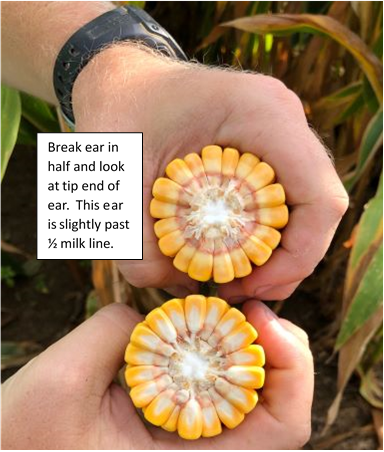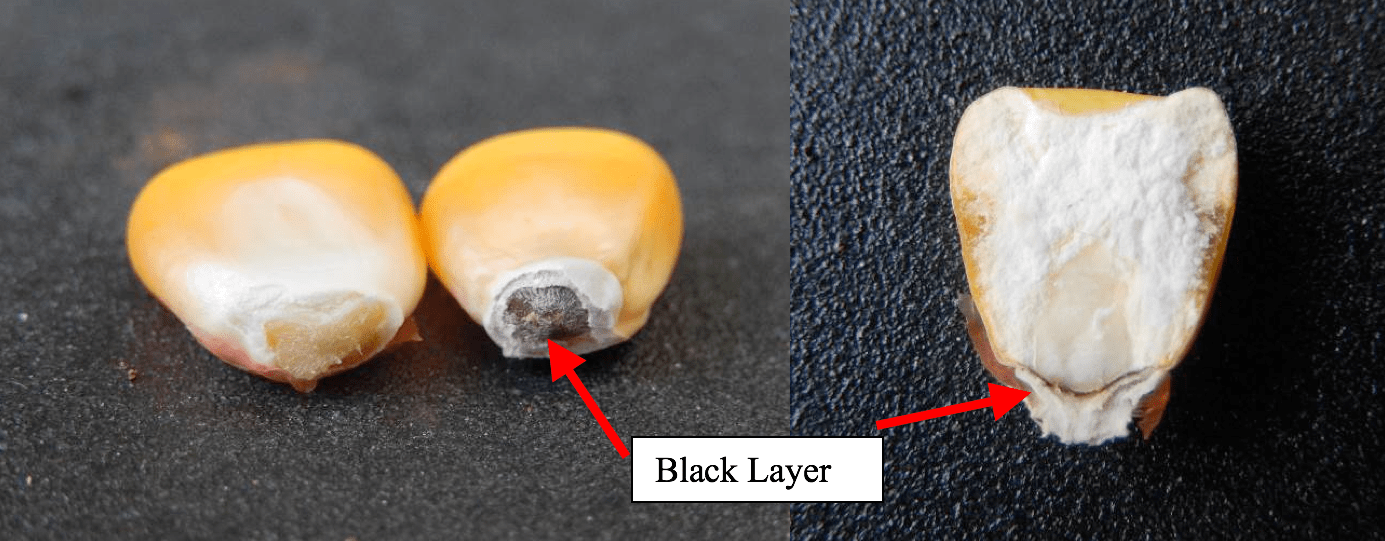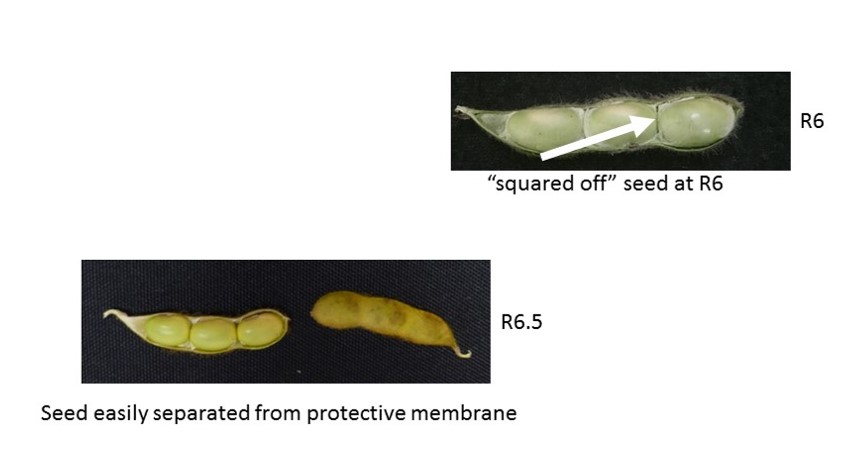| As we approach the end of July, much of our corn and some of our soybean acres are in the latter portion of their respective reproductive growth stages. As we progress toward physiological maturity, lets revisit irrigation termination decisions for these two crops. |
| In an earlier UT Crops Blog Post on June 8th, UT Crop Physiologist Dr. Avat Shekoofa and myself discussed wholistic irrigation strategies for corn and soybean production systems. You can find that article here: Irrigation Timing: Corn and Soybean. However, I wanted to revisit irrigation strategies for these crops and focus principally on termination decisions. While I am not aware of any corn acres that are at physiological maturity (R6: black layer), some may not be far off. And while soybean are a littler farther away with respect to being physiologically mature, now is the appropriate time to revisit what to look for when considering terminating irrigation and effectively walking away from the crop. |
| Irrigation Termination: Corn |
| R5 = Dent |
| Much of the corn acreage in Tennessee is at R5 or ‘dent’. The dent initially forms on the top of the kernel with the milk line then progressing toward the base where it attaches to the cob. Once at R5, tracking the progression of the milk/starch line as it progresses down the kernel is a great way to see how fast your crop is moving from R5 to R6. This transition from R5 – R6 usually takes 24 – 25 days. |

| R6 = Physiological Maturity |
| Often referred to as ‘black layer’ due to the formation of a distinct black layer where the kernel attaches to the cob, this occurs when the progression and accumulation of hard starch is complete and the kernel is physiologically mature. Grain weight and development are also complete. When the crop is fully at R6, it is now physiologically mature. Grain moisture can be as high at 30% at this time. However, from an irrigation standpoint, we can now shut off the pivot and walk away. |

| R5: Dent. Lasts ~ 24 – 25 days. |
| R6: Black layer and physiological maturity. Terminate irrigation. |
| Irrigation Termination: Soybean |
| R5: Beginning Seed |
| Presently, much of the early planted soybean in Tennessee (April 21 and prior) are at or near R5. This is where seed are 1/8” long in the pod at one of the four uppermost mainstem nodes. On average, soybean take approximately 15 days to progress through R5 – R6. |
| R6 = Full Seed |
| At least one pod containing green seed that fills pod capacity at one of the four uppermost mainstem nodes. On average, soybean take approximately 7 – 10 days to progress through R6 – R6.5. |

| R6.5: Seed easily separates from the pod wall membrane |
| This is the equivalent of R6 (black layer) in corn. Pods may still have a green color to them, and some degree of leaves and stem/stalk material may still be green. However, yield has been set at this point and additional inputs, including water, do not increase yield and may reduce ROI. |
| For maximum yield potential it is critical that we not enter or finish R6 and R6.5 at an irrigation or soil-water deficit as lack of adequate soil moisture is still yield-limiting until R6.5. Therefore, with adequate soil moisture at R6.5, we can confidently walk away from the crop. |
| R6: Full Seed. Lasts ~ 7 – 10 days. |
| R6.5: Seed separates from pod wall membrane. Terminate irrigation with adequate soil moisture. |
| R7: Beginning of Maturity. 1 normal (healthy) pod on the main stem has reached its mature color. Occurs ~ 8 – 11 days after R6.5. |
| Confidently and effectively terminating irrigation for a crop require accurate growth staging and are substantially easier when soil moisture sensors are utilized. Please do not hesitate to reach out to myself or your county ANR agent with any questions. |

